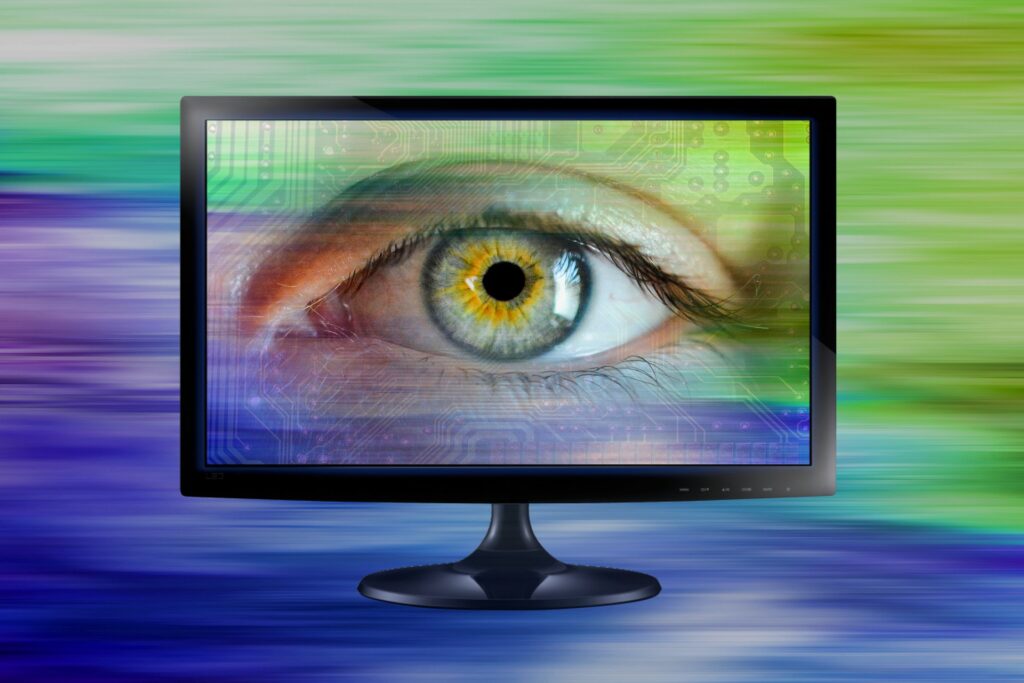For the majority of Americans, screen time is all the time. We utilize computers, tablets, and smart phones constantly, whether at work or for leisure. While the advantages of such technology can’t be denied, all of that time spent looking at a screen is not good for your eyes! Digital eye strain is a very real condition that affects many digital screen users. Take our quiz on digital eye strain to test your knowledge and find out how to protect your eyes in a digital world.
1.) Digital eye strain is also called which of the following?
- Tablet Sight Disorder
- Computer Vision Syndrome
- Screen Eye Strain
- Digital Screen Syndrome
2.) True or false? Digital eye strain is defined as eye and vision-related problems that result from prolonged computer, tablet, e-reader and cellphone use.
3.) How many hours does the average American worker spend in front of a computer, either in the office or when working from home?
- 5 hours
- 6 hours
- 7 hours
- 8 hours
4.) Which of the following are possible eye discomfort issues and vision problems that are symptoms of digital eye strain?
- Eyestrain
- Headaches and/or neck and shoulder pain
- Blurred vision
- Dry eyes
- All of the above
5.) True or false? The level of discomfort a person experiences with digital eye strain is believed to increase with the amount of digital screen use.
6.) Which factor is NOT a cause of digital eye strain?
- Poor lighting and/or glare on a digital screen
- Improper viewing distances
- Screen size
- Poor sitting posture
- Uncorrected vision problems
7.) Which of the following uncorrected vision problems can contribute to digital eye strain?
- Farsightedness, also called hyperopia, or the inability to see things close at hand clearly.
- Astigmatism, which causes blurred vision.
- Inadequate eye focusing or eye coordination abilities.
- Changes in the eyes due to aging, such as presbyopia.
- All of the above
8.) True or false? While many of the visual symptoms that digital screen users can suffer with digital eye strain are temporary and will go away once screen time is over, some individuals may continue to experience reduced visual abilities, such as blurry vision.
9.) Which of the following are options for preventing or reducing problems with digital eye strain?
- Controlling the lighting and glare on the device screen when viewing a digital device.
- Establishing proper working distances and a good posture for screen viewing.
- Correcting minor vision problems.
- Limiting digital screen time as much as possible.
- All of the above
10.) True or false? To help alleviate digital eye strain, utilize the 20-20-20 rule. This is where you take a 20-second break from looking at a digital screen to view something 20 feet away every 20 minutes.
Compiled by ERIKA ALDRICH / Information from the AMERICAN OPTOMETRIC ASSOCIATION
ANSWERS
- B. Computer vision syndrome
- True. Digital eye strain is caused by any digital device with a screen that is viewed at close range.
- C. 7 hours. The average American worker looks at a screen for seven hours.
- E. All of the above
- True. It is believed that the longer a person spends looking at digital screens, the worse digital eye strain symptoms will become.
- C. Screen size. Screen size does not affect digital eye strain, but all the rest do.
- E. All of the above. Many factors can cause digital eye strain.
- True. Most symptoms of digital eye strain are temporary, but they can become long-term problems if preventive or corrective measures aren’t taken.
- All of the above. Controlling the digital screen viewing environment and limiting digital screen time are all options for preventing or reducing digital eye strain symptoms.
- True. Utilizing the 20-20-20 rule while working on a digital screen can alleviate digital eye strain as well.
